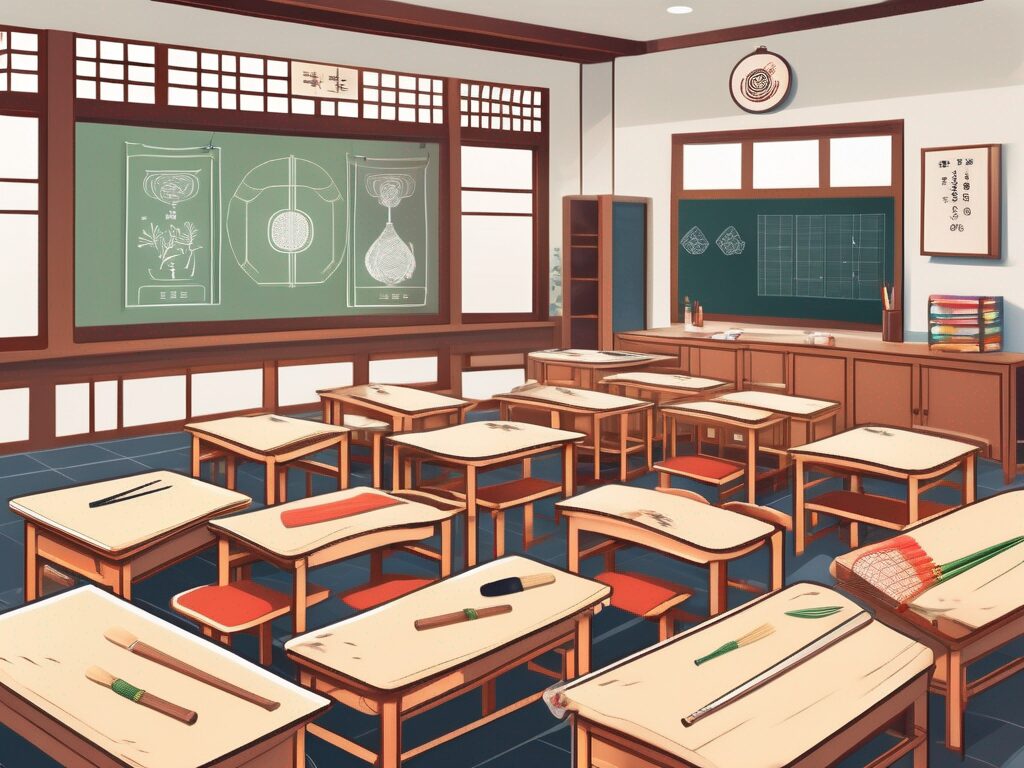Classroom management is a critical aspect of effective teaching, and it can vary significantly from one country to another. South Korea, known for its high-achieving education system, has some unique strategies for managing classrooms. These strategies are deeply rooted in the country’s culture and values, which emphasise respect for elders, discipline, and a strong work ethic. In this exploration, we’ll delve into the various classroom management strategies employed in South Korea, and how they contribute to the success of the education system.
Respect for Teachers and Elders
In South Korea, respect for elders is a fundamental societal value that permeates into the classroom. Teachers are held in high esteem, and students are taught to show them utmost respect. This is quite different from some Western countries, where the teacher-student relationship can be more casual. In South Korea, this respect is manifested in various ways, from the way students greet their teachers to how they behave in class.
This deep-seated respect for teachers helps maintain discipline in the classroom. Students are less likely to misbehave or disrupt the class, knowing that such actions are considered disrespectful. This creates a conducive learning environment where teachers can focus on teaching, and students can concentrate on learning.
High Expectations and Accountability
South Korean teachers have high expectations for their students, both acadically and behaviourally. Students are expected to work hard, stay disciplined, and strive for excellence. These expectations are not just imposed by teachers, but also by parents and society at large. This culture of high expectations can be likened to a pressure cooker, but it also motivates students to give their best.
Along with high expectations, there is also a strong sense of accountability. Teachers are accountable for their students’ performance, and students are accountable for their learning. This mutual accountability fosters a sense of responsibility and commitment, which is crucial for effective classroom management.
Structured Learning Environment
The learning environment in South Korean classrooms is highly structured. Lessons are meticulously planned, and there is a clear routine that students follow. This structure provides a sense of stability and predictability, which can be comforting for students. It also minimises disruptions and maximises learning time.
Despite the structured environment, there is also room for flexibility. Teachers are adept at adjusting their teaching strategies based on the needs of their students. They are also open to feedback and continuously strive to improve their teaching practices.
Use of Technology
South Korea is one of the most technologically advanced countries in the world, and this is reflected in its classrooms. Technology is widely used in teaching and learning, from interactive whiteboards to online learning platforms. This not only makes learning more engaging but also facilitates classroom management.
For instance, teachers can use technology to monitor students’ progress, provide feedback, and communicate with parents. Students can use technology to access learning materials, submit assignments, and collaborate with their peers. This seamless integration of technology enhances the efficiency and effectiveness of classroom management.
Collaborative Learning
While South Korean classrooms can be teacher-centred, there is also an emphasis on collaborative learning. Students are encouraged to work together on projects, discuss ideas, and help each other learn. This fosters a sense of community and cooperation, which is beneficial for classroom management.
Collaborative learning also helps develop students’ social and communication skills, which are essential for their future success. It teaches them to respect different perspectives, work as a team, and solve problems collaboratively. These are valuable life skills that go beyond the classroom.
Conclusion
Classroom management in South Korea is a complex interplay of cultural values, high expectations, structured learning, technology, and collaboration. It is a testament to the country’s commitment to education and its relentless pursuit of excellence. While the South Korean model may not be perfect or applicable in all contexts, there is much to learn from their strategies.
Ultimately, effective classroom management is about creating a positive learning environment where students feel valued, motivated, and engaged. It’s about striking a balance between discipline and freedom, structure and flexibility, individual and collective learning. And it’s about continuously evolving and adapting to meet the needs of our students in this ever-changing world.
Take Your Classroom Management Skills Global with IPGCE
As you reflect on the innovative classroom management strategies of South Korea, consider elevating your own teaching practice to a global standard with IPGCE. Embrace the opportunity to deepen your professional development, overcome the barriers of stringent qualifications, and enhance your career progression. Join a vibrant community of educators, gain insights into international curricula, and find the perfect balance between advancing your career and fulfilling your work commitments. Don’t let inadequate credentials limit your potential. Join the UK’s #1 Teacher Training Course today and become the educator you aspire to be.

